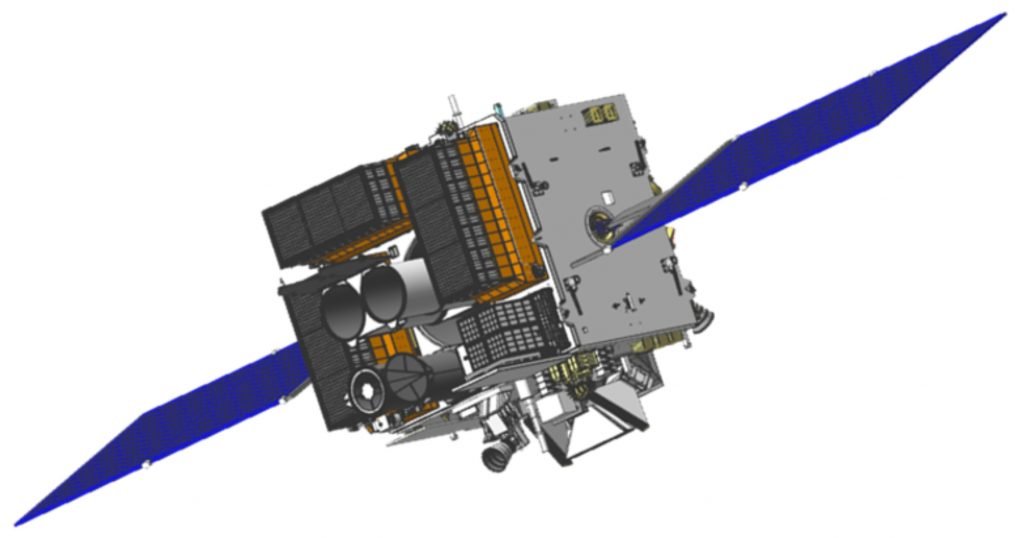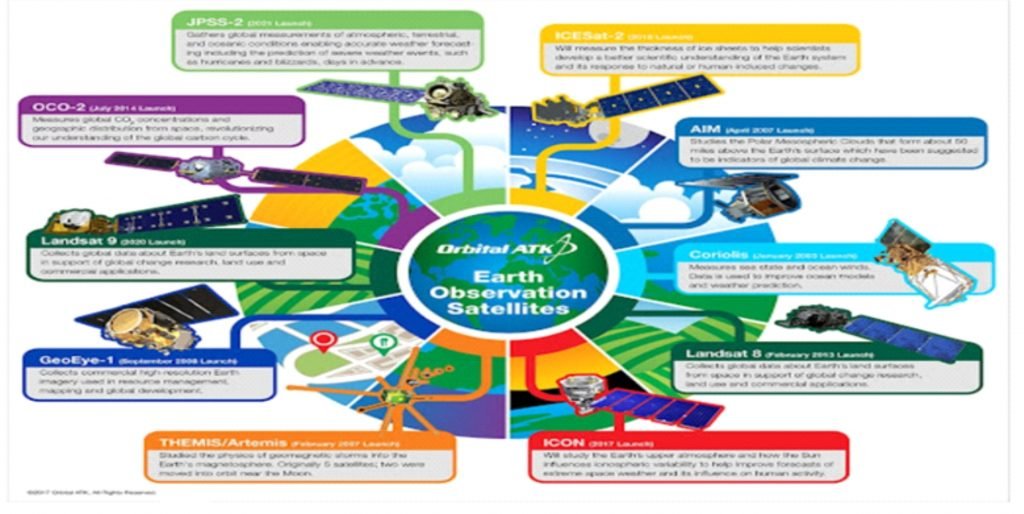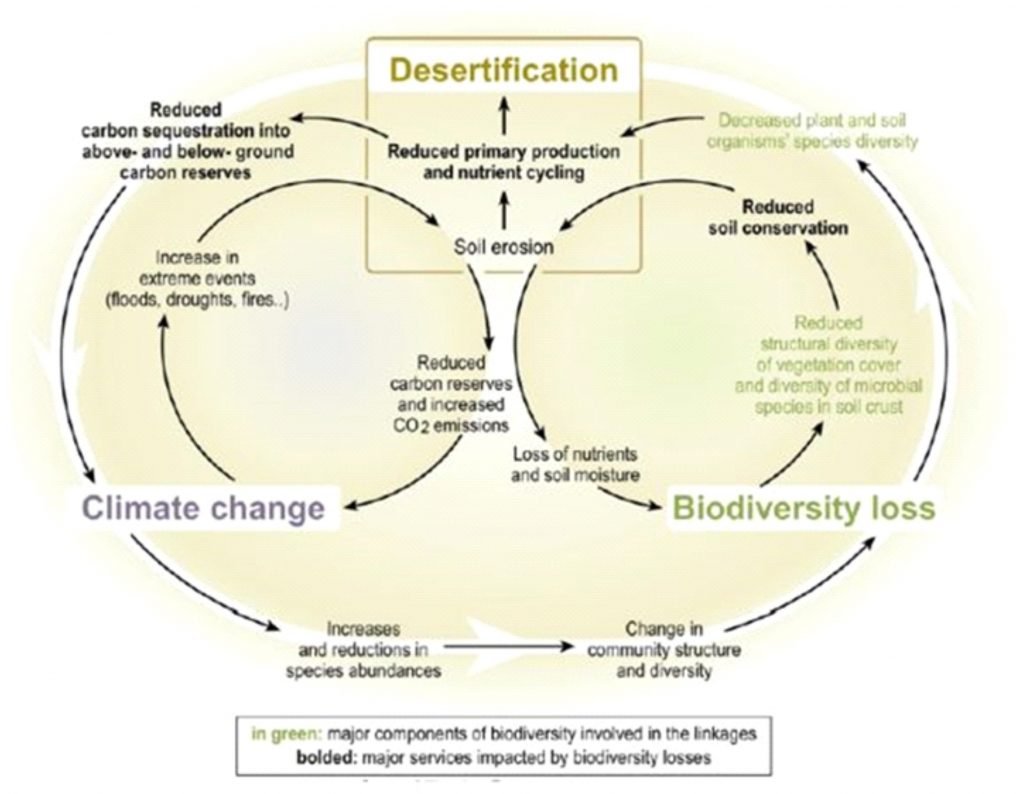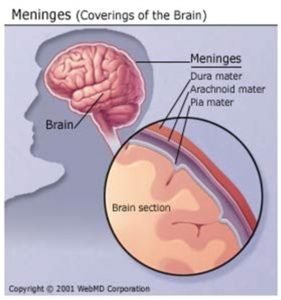Astrosat
Indian Express
GS 3: Defence
Context:
- Astrosat, India’s maiden space-based observatory, has completed six years of successful operations.
Features:
- It was launched by the ISRO in 2015.
- It is the first dedicated Indian astronomy mission.
- It aimed at studying celestial sources in X-ray, optical and UV spectral bands simultaneously.
- The payloads cover the energy bands of Ultraviolet (Near and Far), limited optical and X-ray regimes (0.3 keV to 100keV).
- The minimum useful life of the AstroSat mission is expected to be 5 years.
Scientific objectives:
- To understand high energy processes in binary star systems containing neutron stars and black holes
- Estimate magnetic fields of neutron stars
- Study star birth regions and high energy processes in star systems lying beyond our galaxy
- Detect new briefly bright X-ray sources in the sky
- Perform a limited deep field survey of the Universe in the Ultraviolet region.

Bureaucracy’s Digital Challenge
The Hindu
GS 2: Role of civil services in a democracy
Context:
- If civil servants don’t use social media appropriately, their role as independent advisers stands threatened.
About:
The biggest challenge today to Indian bureaucracy is the shift from desk to digital.
- This shift is not limited to a transition towards e-office and e-governance, but includes the organisational and bureaucratic response to digital spaces, especially the use of social media.
- The focus has been mostly on the former, while the latter has remained largely unaddressed.
- Bureaucrats should use social media to improve public policies. If they don’t use social media appropriately, their role as independent advisers stands threatened.
Why using social media by civil servants is considered wrong?
- Indian Bureaucracy is characterized by hierarchy, formal relationships and standard procedures, while social media is identified by openness, transparency and flexibility. Some fear that Indian Bureaucracy would be compromised in that process.
- Creates selective accountability: In India, the role of social media in bureaucracy has taken a different direction. Social media is getting used by civil servants for self-promotion through their selective posts. Using this, civil servants create a narrative of their performance.
- There is a wrong notion getting created in the public consciousness that social media is the way to access civil servants and make them accountable.
- But we should remember that this creates only selective accountability and cannot substitute institutional accountability.
Why is social media to be used by civil servants?
- People: It helps to make people aware of government policies and programmes.
- It also creates a positive outlook towards the bureaucracy, which is still considered opaque and inaccessible.
- Bureaucracy: It helps bureaucrats to engage with the public, serves them transparently while being politically neutral. Anonymity is the hallmark of bureaucracy, including in India. But in contemporary governance where the public is the centre and values are more important than facts, bureaucracy cannot afford to remain completely anonymous.
- The use of social media is gradually getting institutionalized in many Westminster system-based countries. For Eg During the Brexit debate in the U.K., many civil servants shaped public debate through the use of social media even while remaining politically neutral. In India, civil servants haven’t reflected on this aspect of digital bureaucracy.
- So, bureaucrats should use social media to improve public policies, not for self-promotion. This will set a good precedent for digital bureaucracy.
- Social media is becoming effective in dealing with cyber crime, and in delivering social good.
- It provides an opportunity to bureaucrats to shape the public discourse and engage with the public while being politically neutral.
- Social media ensures that blind obeying political executive is minimised and bureaucrats serve the people.
- Social media is critical for bureaucrats to equip themselves against the menace of misinformation and disinformation.
Landsat 9
Indian Express
GS 3: Space Technology
Context:
- Recently, NASA has launched an earth monitoring satellite called Landsat 9 from Vandenberg Space Force Base in California.
- The satellite is a joint mission of NASA and the US Geological Survey (USGS).
- This satellite is referred to as NASA’s’ new eye in the sky’ that will help study climate change.
Background:
- Landsat-9 is the continuation of a series of Earth-observing spacecraft stretching back almost 50 years.
- The first Landsat satellite was launched in 1972.
- Since then, Landsat satellites have collected images of earth and helped understand how land usage has changed over the decades.
- In 2008,it was decided that all Landsat images will be free and publicly available and the policy has helped scores of researchers, farmers, policy analysts, glaciologists, and seismologists.
- Landsat images have been used to study the health of forests, coral reefs, monitor water quality and melting glaciers.
About:
- The Landsat 9 joins Landsat 8 that was launched in 2013 and the satellites together will collect images of Earth’s surface.
- It takes 8 days to capture the whole Earth.
- Landsat 9 carries instruments similar to the other Landsat satellites, but it is the most technologically advanced satellite of its generation.
- The instruments aboard Landsat 9 are the Operational Land Imager 2 (OLI-2) and the Thermal Infrared Sensor 2 (TIRS-2).
- OLI-2: It captures sunlight reflected off Earth’s surface and studies the visible, near-infrared, and short wave infrared portions of the spectrum.
- TIRS-2: It has a four-element refractive telescope and photosensitive detectors that capture thermal radiation and help study the Earth’s surface temperature.

Punjab’s Case of Desertification
Indian Express
GS 3: Disaster Management
Context:
- Series of reports on water table depletion predicted that Punjab will turn into a desert in 25 years.
About Reports:
- The Punjab Vidhan Sabha committee has said that the state will turn into a desert in the next 25 years if the present trend of drawing water from underground aquifers continues.
- The State of the World Report, 1998 published by Washington-based World Watch Institute (WWI) said that Punjab’s aquifers could be depleted by 2025.
- Out of 138 blocks in Punjab, 109 have already gone into the ‘dark’ or over-exploited zone, which means groundwater extraction is more than 100% here.
- Paddy takes at least 4,000 liters water to grow one kg of rice, estimating that the remaining half of Punjab will also slip into the dark zone in the coming 25 to 27 years.
- Already upper aquifers have been dries and this could happen to deep aquifers too, and then Punjab will be like another Rajasthan.
- Farmers must be incentivised to choose cropping patterns that require less water, and go for drip irrigation or other water management mechanisms.
Reasons:
- Drawing more water than is being replenished.
- Use of tubewell or submersible pumps for extraction of groundwater.
- Faulty cropping pattern such as predominant cultivation of water guzzling paddy especially with the advent of Green Revolution.
- The rate of water extraction in Punjab is 1.66 times against the rate of replenishment.
- Puddling (tillage of paddy field in a flooded condition) has created a thick hard layer on the agricultural fields, disturbing the recharging system and creating flash floods.
What needs to be done?
- Farmers must be incentivised to choose cropping patterns that require less water, and go for drip irrigation or other water management mechanisms to save our only available deeper aquifers.

Global Roadmap to Defeat Meningitis by 2030
Down to Earth
GS : Health
Context:
- The World Health Organization (WHO) and its partners launched the first-ever Global Roadmap to Defeat Meningitis by 2030.
About:
- The strategy aims to prevent infections and improve care and diagnosis for those affected.
- It also aims to eliminate epidemics of bacterial meningitis — the deadliest form of the disease — and to reduce deaths by 70% and halve the number of cases.
- The strategy could save more than 200,000 lives annually and significantly reduce the disability caused by the disease.
Aims and Objectives:
- Achievement of high immunisation coverage, development of new affordable vaccines and improved prevention strategies and outbreak response
- Speedy diagnosis and optimal treatment for patients
- Good data to guide prevention and control efforts
- Care and support for those affected, focusing on early recognition and improved access to care and support for after-effects
- Advocacy and engagement, to ensure high awareness of meningitis, accountability for national plans, and affirmation of the right to prevention, care and after-care services.

Ordnance Factory Board (OFB)
The Hindu
GS 3: Defence and Security
Context:
- The Defence Ministry has issued an order for the dissolution of the Ordnance Factory Board (OFB) with effect from October 1, 2021.
- Its assets, employees and management would be transferred to seven newly constituted defence public sector undertakings (DPSUs).
About:
- This would mean the end of the OFB, the establishment of which was accepted by the British in 1775.
- On June 16, the Union Cabinet had approved a long-awaited reform plan to corporatise the OFB, which has 41 factories, into seven fully government-owned corporate entities on the lines of DPSUs.
- With effect from October 1, the management, control, operations and maintenance of these 41 production units and identified non-production units would be transferred to seven government companies: Munitions India Ltd., Armoured Vehicles Nigam Ltd., Advanced Weapons and Equipment India Ltd., Troop Comforts Ltd., Yantra India Ltd., India Optel Ltd., and Gliders India Ltd.
- All the employees of OFB (Group A, B and C) belonging to the production units and also the identified non-production units shall be transferred to the new DPSUs on terms of foreign service without any deputation allowance initially for a period of two years.

